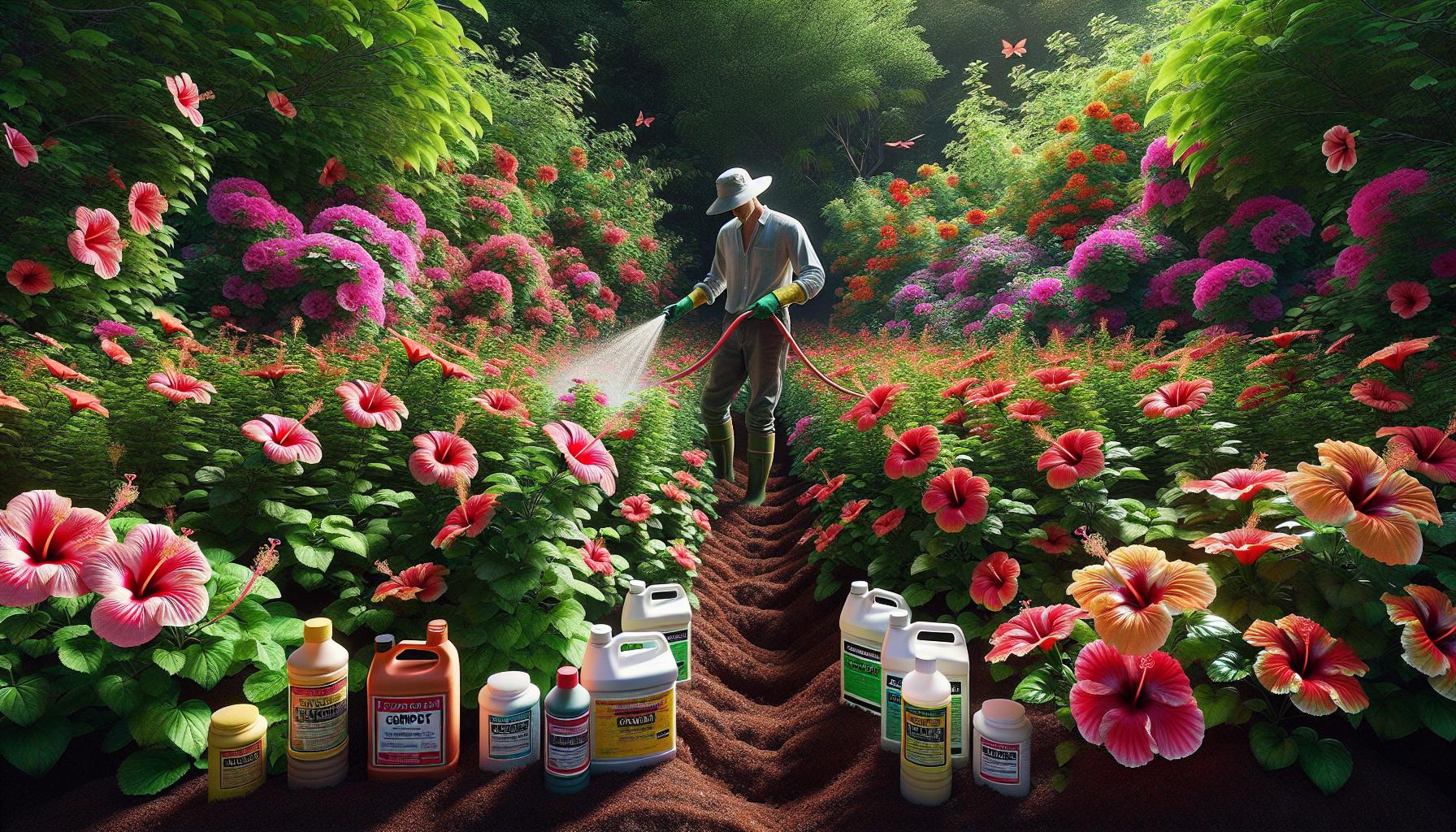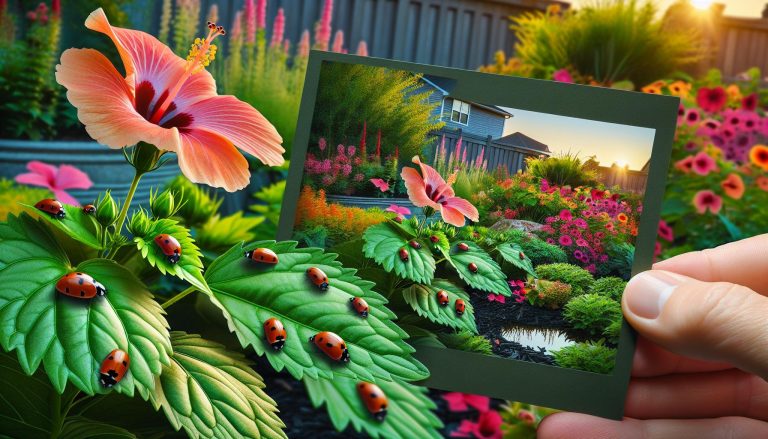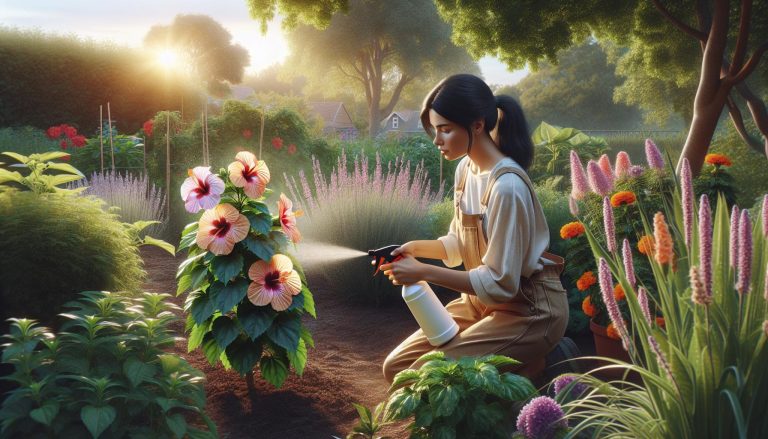Best Fertilizer for Hibiscus: Top Picks for Vibrant Blooms
As a passionate gardener, I’ve always been captivated by the vibrant beauty of hibiscus flowers. But achieving those stunning blooms isn’t just about sunlight and water. The secret lies in using the right fertilizer. Did you know that hibiscus plants have specific nutritional needs that can make or break their performance?
I’ve spent years experimenting with different fertilizers, and I’m excited to share my findings with you. Whether you’re a seasoned hibiscus grower or just starting out, choosing the best fertilizer can be overwhelming. With so many options on the market, how do you know which one will give your hibiscus the boost it needs? In this article, I’ll guide you through the top fertilizers that’ll help your hibiscus thrive and produce those show-stopping flowers you’ve been dreaming of.
Understanding Hibiscus Nutritional Needs
Hibiscus plants require specific nutrients to thrive and produce vibrant blooms. I’ve found that understanding their nutritional needs is crucial for selecting the best fertilizer. Let’s explore the essential macronutrients and micronutrients hibiscus plants need for optimal growth.
Macronutrients for Hibiscus
Hibiscus plants rely on three primary macronutrients: nitrogen (N), phosphorus (P), and potassium (K). Nitrogen promotes lush foliage growth, phosphorus supports root development and flower production, and potassium enhances overall plant health and disease resistance. I’ve discovered that a balanced NPK ratio of 7-2-7 or 12-4-8 works exceptionally well for hibiscus plants. During the growing season, I apply a fertilizer with higher nitrogen content to encourage leafy growth, while switching to a phosphorus-rich formula before the flowering period to boost bloom production.
Micronutrients for Hibiscus
In addition to macronutrients, hibiscus plants benefit from several essential micronutrients. These include iron, manganese, zinc, copper, boron, and molybdenum. Iron is particularly important for hibiscus, as it prevents chlorosis (yellowing of leaves) and promotes healthy green foliage. I’ve found that using a fertilizer containing chelated iron ensures better absorption by the plant. Manganese and zinc play crucial roles in enzyme activation and chlorophyll production, while copper aids in photosynthesis and stem strength. Boron supports flower development and fruit set, and molybdenum assists in nitrogen metabolism. To provide these micronutrients, I often use a balanced fertilizer that includes trace elements or supplement with a specialized micronutrient mix designed for hibiscus plants.
Types of Fertilizers for Hibiscus
Hibiscus plants thrive with proper nutrition, and choosing the right fertilizer is crucial for their health and blooming. I’ll explore two main categories of fertilizers suitable for hibiscus: organic and synthetic options.
Organic Fertilizers
Organic fertilizers derive from natural sources and offer slow-release nutrients. I recommend compost, aged manure, or fish emulsion for hibiscus plants. These options improve soil structure and promote beneficial microbial activity. Bone meal provides phosphorus for root development, while seaweed extracts offer trace minerals. Organic fertilizers release nutrients gradually, reducing the risk of over-fertilization and root burn.
Synthetic Fertilizers
Synthetic fertilizers are manufactured products with precise nutrient ratios. For hibiscus, I suggest using a balanced formula like 10-10-10 or 20-20-20 during the growing season. Water-soluble fertilizers are easy to apply and quickly absorbed by the plants. Slow-release granular fertilizers provide consistent nutrition over time. When using synthetic options, it’s essential to follow application instructions carefully to avoid nutrient imbalances or plant damage.
Top-Rated Fertilizers for Hibiscus
After understanding the nutritional needs of hibiscus plants, it’s time to explore the best fertilizers available in the market. I’ve carefully selected and reviewed top-performing products in different categories to help you choose the ideal fertilizer for your hibiscus.
Best All-Purpose Fertilizer
Miracle-Gro Water Soluble Bloom Booster Flower Food (15-30-15) stands out as the best all-purpose fertilizer for hibiscus. This formula provides:
- High phosphorus content for abundant blooms
- Balanced nitrogen and potassium for overall plant health
- Quick-acting, water-soluble nutrients for fast absorption
Apply this fertilizer every 7-14 days during the growing season for optimal results. It’s suitable for both container and in-ground hibiscus plants.
Best Organic Option
For organic gardeners, Dr. Earth Organic Bud & Bloom Booster (3-9-4) is an excellent choice. Key features include:
- OMRI Listed for organic use
- Contains beneficial soil microbes and mycorrhizae
- Slow-release formula for consistent feeding
This organic fertilizer promotes vibrant blooms while improving soil health. Apply it monthly during the growing season, working it gently into the soil around your hibiscus plants.
Best Slow-Release Formula
Osmocote Smart-Release Plant Food Plus Outdoor & Indoor (15-9-12) offers a convenient slow-release option for hibiscus. Benefits include:
- 6-month feeding from a single application
- Balanced nutrient ratio for hibiscus growth and blooming
- Temperature-controlled nutrient release
This fertilizer is ideal for busy gardeners or those who prefer a low-maintenance approach. Apply it once at the beginning of the growing season, and it’ll feed your hibiscus plants consistently for up to 6 months.
How to Apply Fertilizer to Hibiscus
Proper application of fertilizer is crucial for healthy hibiscus growth and vibrant blooms. Here’s how to fertilize your hibiscus effectively:
Timing and Frequency
Fertilize hibiscus plants during their active growing season, typically spring through fall. Apply fertilizer every 2-3 weeks for liquid formulations or every 6-8 weeks for slow-release granules. Reduce fertilization in late summer to prepare plants for dormancy. Avoid fertilizing during winter months when growth slows. For potted hibiscus, maintain a consistent feeding schedule year-round if kept indoors in a warm environment.
Application Methods
For granular fertilizers, sprinkle the recommended amount evenly around the base of the plant, extending to the drip line. Water thoroughly after application to help nutrients penetrate the soil. With liquid fertilizers, mix the solution according to package instructions and apply directly to the soil, avoiding contact with leaves. For foliar feeding, use a fine mist sprayer to apply diluted liquid fertilizer to both sides of the leaves early in the morning or late evening. Always water plants before fertilizing to prevent root burn. For container-grown hibiscus, apply fertilizer to moist soil and water again after application to distribute nutrients evenly.
Signs of Over-Fertilization in Hibiscus
Over-fertilization can be detrimental to hibiscus plants, causing various issues that affect their health and appearance. Here are key indicators of excessive fertilizer use:
Leaf Discoloration
Hibiscus leaves display distinct color changes when over-fertilized:
- Yellowing edges or tips (chlorosis)
- Brown or black spots
- Entire leaves turning yellow or brown
These discolorations often start at the leaf margins and progress inward.
Stunted Growth
Despite increased fertilizer application, hibiscus plants may exhibit:
- Slower growth rate
- Smaller leaves
- Fewer blooms
- Weak, spindly stems
This stunted development occurs due to nutrient imbalances and root damage.
Leaf Drop
Excessive fertilizer leads to premature leaf shedding:
- Sudden loss of leaves, especially lower ones
- Gradual thinning of foliage
- Bare branches or stems
Leaf drop is a stress response to chemical burn from over-fertilization.
Salt Buildup
Visible salt accumulation on soil surface or pot edges:
- White, crusty deposits
- Soil pulling away from container sides
- Difficulty in water absorption
This buildup indicates excessive mineral concentration from over-fertilization.
Root Damage
Though not immediately visible, root system damage occurs:
- Browning or blackening of roots
- Slimy or mushy root texture
- Foul odor from decaying roots
Root damage impairs nutrient uptake and overall plant health.
Wilting and Drooping
Over-fertilized hibiscus plants often show signs of water stress:
- Drooping leaves, even with adequate watering
- Curling or cupping of leaves
- Overall wilted appearance
These symptoms result from chemical burn and root damage affecting water uptake.
By recognizing these signs early, you can adjust your fertilization practices and prevent long-term damage to your hibiscus plants. Proper fertilizer application ensures healthy growth and abundant blooms without risking over-fertilization issues.
Conclusion
Choosing the right fertilizer for your hibiscus is crucial for vibrant blooms and healthy growth. Whether you opt for organic or synthetic options remember to consider your plant’s specific needs and your gardening style. Always follow application guidelines carefully to avoid over-fertilization. With the right fertilizer and proper care your hibiscus will thrive rewarding you with stunning flowers throughout the season. Happy gardening and enjoy the beautiful results of your well-nourished hibiscus plants!






